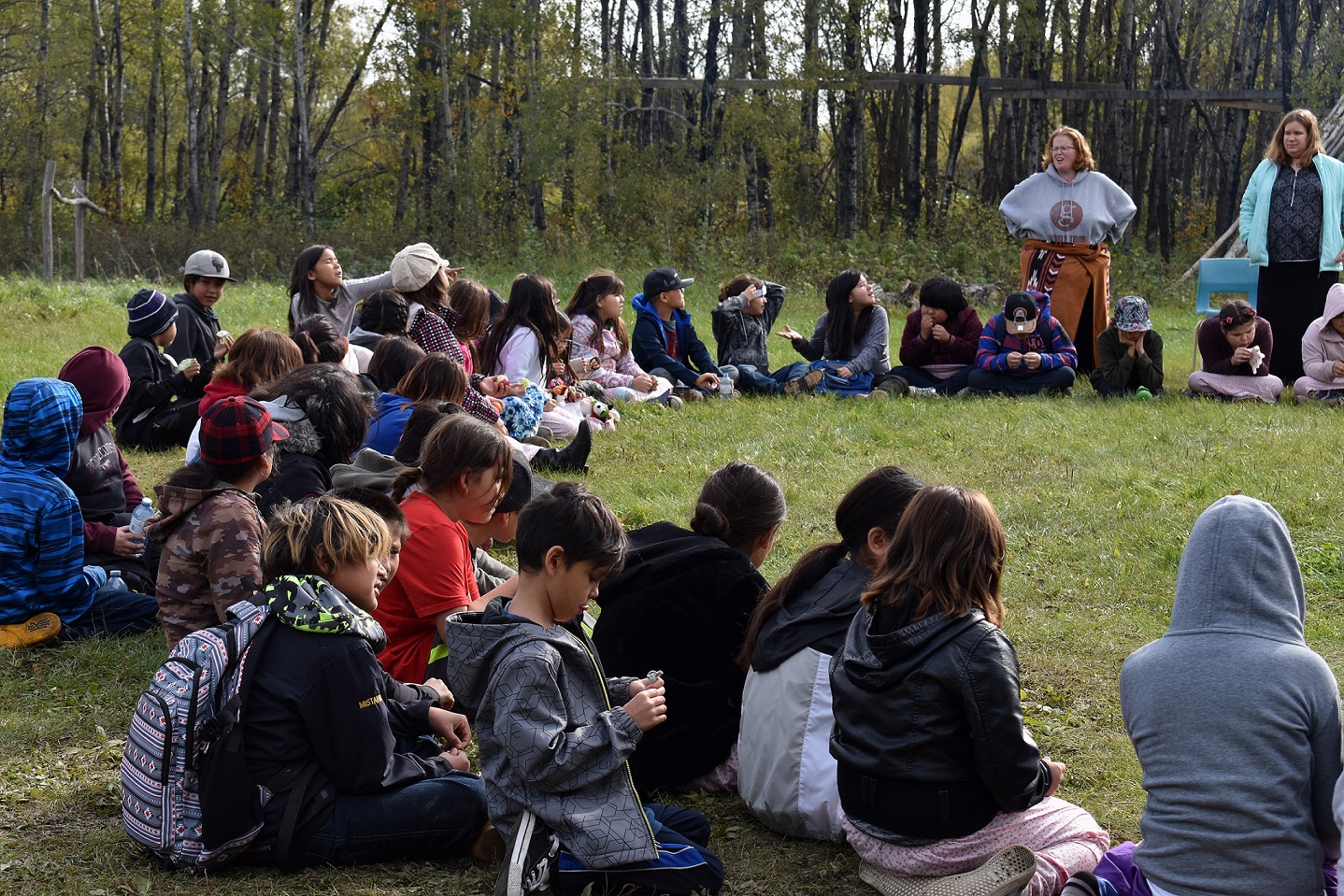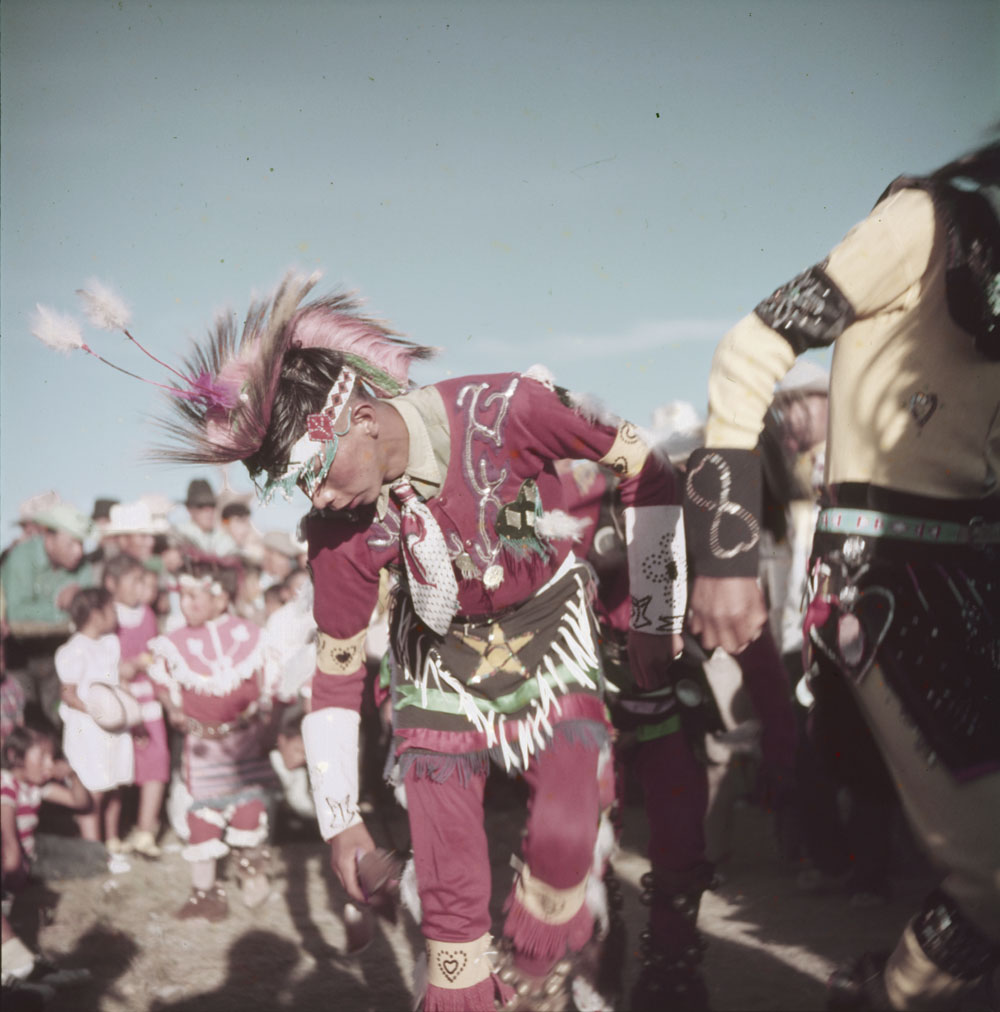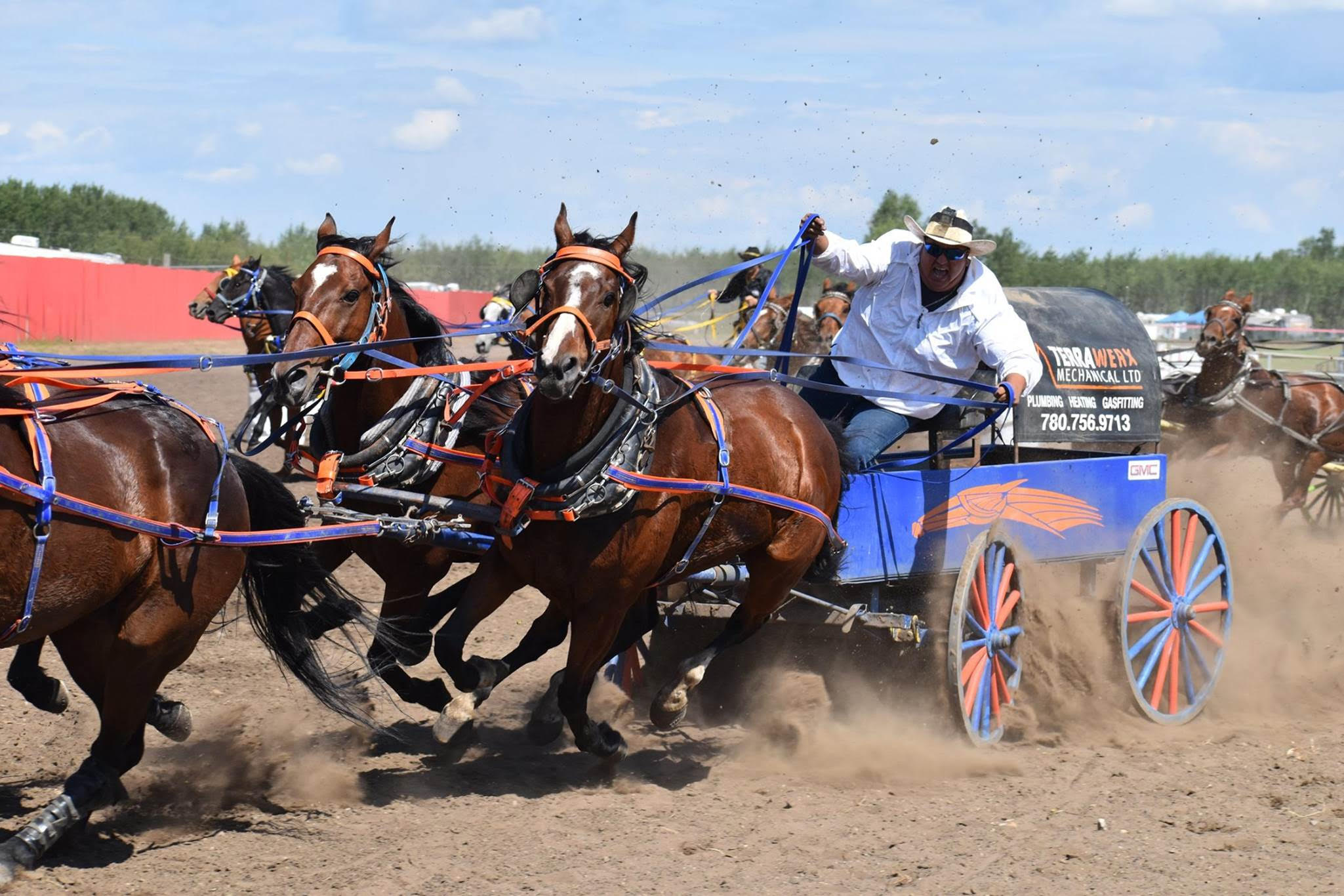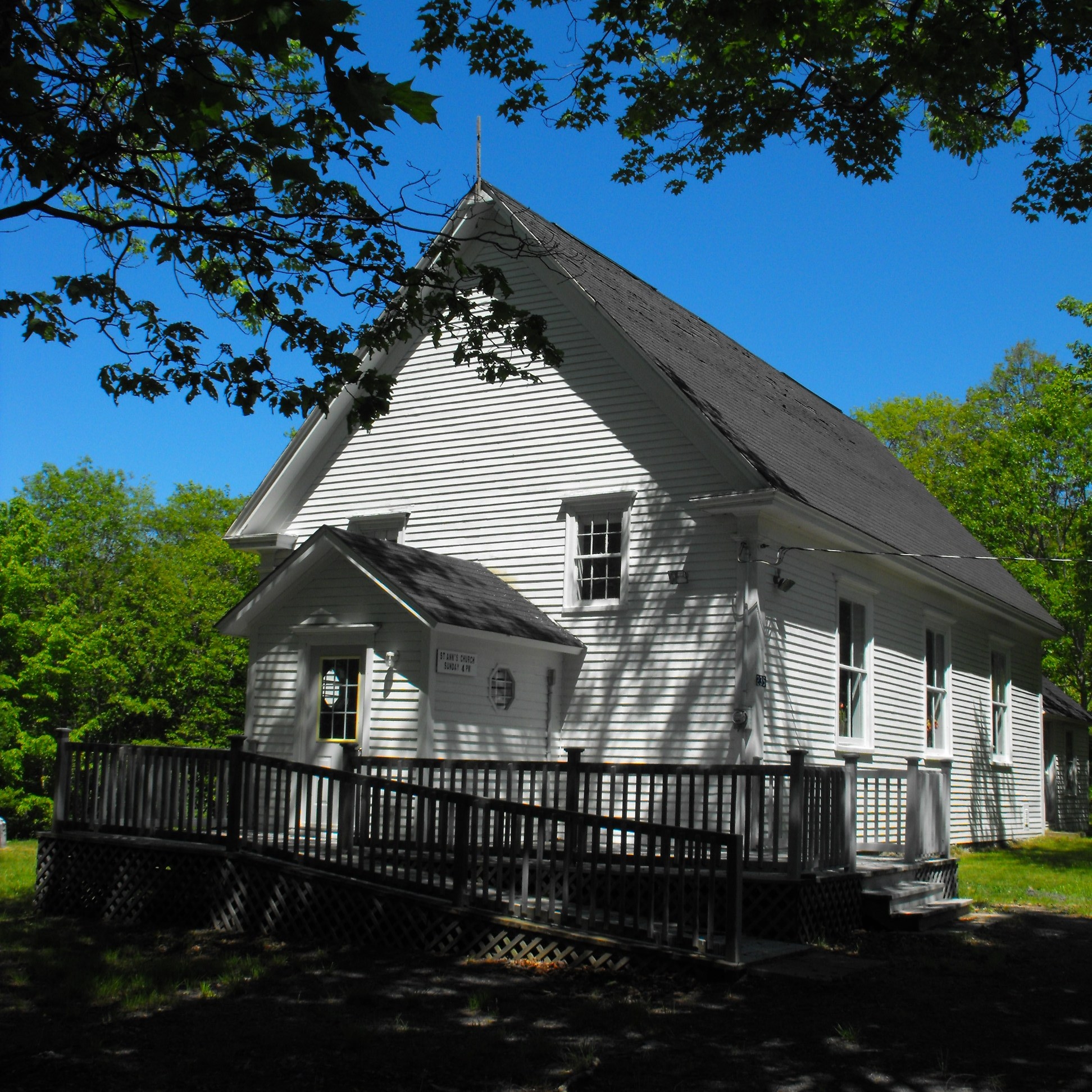There are 138 reserves in Alberta, held primarily by the province’s 46 First Nations ( see also First Nations in Alberta). A handful of these reserves are held by First Nations based outside the province, namely Salt River First Nation and Smith’s Landing First Nation, whose administrative headquarters are in the Northwest Territories. Onion Lake Cree Nation, based in Saskatchewan, holds a reserve that straddles the Alberta-Saskatchewan border. In 2020, there were 133,051 Registered Indians living in Alberta, 60 per cent of whom lived on reserves. First Nations in Alberta are typically grouped into three areas based on Treaties 6, 7 and 8 (see also Numbered Treaties). While historically the Canadian government assigned reserves to First Nations people and not Métis or Inuit, Alberta is the only province in which Métis people were given a collective land base (see Métis Settlements).
Geography
While all of Alberta is First Nations traditional territory, reserves make up just over 1 per cent of the province’s total land area. Alberta’s three treaty areas stack roughly one on top of the other moving south to north. Treaty 7 is located in the southern portion of the province. Reserves in Treaty 7 are held by members of the Blackfoot Confederacy, the Stoney and the Tsuut'ina (see Dene). The three largest reserves in Canada are located in Treaty 7. In descending order they are Blood No. 148, held by the Kainai Nation, Siksika No. 146, held by the Siksika Nation, and Piikani, held by the Piikani Nation. Blood No. 148 is 1,342.9 km2.
Treaty 6 is north of Treaty 7. Approximately half of Treaty 6 is located in Alberta and the other half in Saskatchewan. The majority of reserves in Treaty 6 are held by Cree First Nations; however, the area also includes Salteaux, Nakota Sioux and Dene communities.
Treaty 8 is located in the northern portion of the province. Indigenous signatories to Treaty 8 also have communities in British Columbia, the Northwest Territories and Saskatchewan. Dene and Cree people live on the reserves in this area. Reserves in Treaty 8 territory are smaller than those in southern parts of the province due to traditional residence patterns that existed prior to the creation of reserves.
Some First Nations have a single reserve they live on, but there are many deviations from this standard. For example, three Stoney Nakoda First Nations — Bearspaw, Chiniki and Goodstoney — share a single reserve in the foothills of the Rocky Mountains, west of Calgary. Similarly, the community of Maskwacis is composed of four Cree First Nations who share a common identity and culture: Louis Bull, Ermineskin, Samson and Montana. But, unlike the Stoney Nakoda, each nation has its own reserve. The First Nations of Maskwacis also have a shared reserve at Pigeon Lake that was a traditional fishing site.
Demographics

The largest reserve in Alberta by population is Blood No. 148, held by the Kainai Nation. In 2020, 8,752 of Kainai’s 12,724 members lived on reserve, which is southwest of Lethbridge. The second-largest reserve by population is Saddle Lake No. 125, held by the Saddle Lake Cree Nation and located 120 km northeast of Edmonton. In 2020, 6,905 of Saddle Lake’s 11,109 members lived on reserve.
Residents of reserves in Alberta speak many languages. These languages include English, French and Indigenous languages from three language families: Algonquian, Siouan and Dene (Athapaskan). Blackfoot, Cree and Anishinaabemowin (Ojibwe) are Algonquian languages spoken on reserves in Alberta, while Stoney and Dakota belong to the Siouan group. Dene languages spoken on Albertan reserves include Dene Su̜ɬiné (Chipewyan), Dane-Zaa (Beaver), Tsuut’ina (Sarcee) and Dene Dháh (South Slavey). (See also Indigenous Languages in Canada.)
History
Treaties 6 and 7
The majority of reserves in Alberta were created through provisions in Treaties 6, 7 and 8. Treaty 6 was signed in 1876 and Treaty 7 in 1877. At the time, the bison that had once roamed the North American plains in the millions had all but disappeared. Plains Indigenous peoples, who relied on bison for food, were growing increasingly desperate. From Indigenous peoples’ perspectives, treaties were sacred compacts that offered a way to survive, as the Canadian government promised assistance in transitioning to an economy based on agriculture. From the Canadian government’s perspective, treaties were a way of enabling westward colonial settlement by taking away or limiting Indigenous peoples’ rights to the land.

Both Treaties 6 and 7 said that reserves should be no bigger than one square mile (about 2.6 km2) for each family of five, and that reserves for larger or smaller families should be created in proportion to this measurement. Whereas Treaty 6 said First Nations would be consulted as to the location of reserves, Treaty 7 outlined reserve areas. For example, part of the Treaty 7 text says that “the reserve of the Piegan Band of Indians shall be on the Old Man’s River, near the foot of the Porcupine Hills, at a place called ‘Crow’s Creek.’” Today, this is the rough location of the Piikani Nation’s reserve.
The Canadian government used starvation as a way of forcing Plains Indigenous peoples onto reserves. By 1888, bison were extirpated from Canada. While the government offered rations to starving Indigenous people, only those whose Nation had signed a treaty were eligible to receive the food.
Treaty 8

Treaty 8 was signed in 1899. Like Treaties 6 and 7, Treaty 8 said that reserves should be no bigger than one square mile for each family of five. However, Treaty 8 also included a clause that said families or individuals could choose to have 160 acres of land “in severalty” (separately), on which they could live apart from the reserves. This option was an acknowledgment that the social structures of northern Indigenous peoples were different than those who lived on the Plains. In general, northern First Nations lived in smaller groups to maintain sustainable hunting practices. Because of this clause, reserves in Treaty 8 tend to be smaller than those found in Treaties 6 and 7. Similarly, it is common for a Treaty 8 First Nation to have multiple reserve sites.
Land Claims
Some reserves in Alberta have been created or enlarged as a result of specific land claims. The specific land claims process, introduced in 1973, addresses the grievances of First Nations who signed treaties but did not receive what they were entitled to. (See also Comprehensive Land Claims: Modern Treaties.) The majority of specific land claim agreements in Alberta have been made in Treaty 8 territory.
For example, in 2010, Bigstone Cree Nation settled one of the largest land claims in Alberta’s history. The agreement, made with the federal and provincial governments, enlarged existing reserves and created new reserves. In 1899, Chief Joseph Bigstone signed Treaty 8 at Wabasca, a community about 300 km north of Edmonton. The Bigstone Cree received a reserve consisting of five plots of land at Wabasca and another to the south at Calling Lake (legally known as Jean Baptiste Gambler No. 183). However, because treaty commissioners travelled primarily by the Peace and Athabasca rivers, they missed several communities who did not live along these waterways. These included communities near Wabasca, namely Chipewyan Lake, Peerless Lake and Trout Lake. Over time, Indian agents added members of these overlooked communities to their list of Bigstone Cree band members. Although Treaty 8 said each family of five should receive one square mile of reserve lands, Bigstone’s new members did not result in an increase in their reserve’s size.
The 2010 land claim settlement created a new band called Peerless Trout First Nation, combining the communities of Peerless Lake and Trout Lake. It also provided 566.6 km2 of reserve lands. These reserve lands will be divided between Peerless Trout First Nation and the communities at Wabasca, Calling Lake and Chipewyan Lake.
Politics
Governance
Historically, Indigenous groups were linked to each other for various reasons. These relationships included military or economic alliances, kinship relations and shared understandings of diplomacy. Their territories often overlapped; for example, in Alberta, Siksika (Blackfoot) traditional territory overlaps with that of the Plains Cree.
Today, First Nations are still connected, but each has sole jurisdiction over their reserve lands. This is in contrast to the forms of overlapping jurisdiction present prior to the creation of reserves.

Reserves in Alberta, like in other provinces, are governed by chiefs and councils. The size of the government and the length of their time in office differs from First Nation to First Nation. Some are governed according to the Indian Act, which provides one chief as well as one councillor for every 100 members of the First Nation. The chief and councillors are elected every two years.
However, the majority of First Nations in Alberta use what the federal government calls a “custom” form of governance. This means that the First Nation has more choice as to what their leadership selection process looks like. Under custom systems, chiefs and councils are often elected for longer terms. For example, Sturgeon Lake Cree Nation elects a chief and six councillors every three years as opposed to two.
Elections
In many ways, elections on reserves look similar to elections in other Canadian municipalities. For example, ballots are secret and administered by an independent electoral officer. But unlike other political bodies, First Nations sometimes have a majority of their electorate who do not live within the government’s territory. This can be a source of political tension. For example, the Athabasca Chipewyan First Nation, who hold eight parcels of reserve land near the southwestern end of Lake Athabasca, had 1,276 registered band members in 2018. However, only 256 of these members lived on reserve.
In Cree, reserves are sometimes referred to as iskonikan, meaning “what’s left over.” Throughout Canada’s history, Indigenous people have had their land taken away from them. As a result, most First Nations people feel reserves — what’s left over — are important to their survival and strength. Election rules reflect this history and are part of a complicated discussion about how to protect the future of reserves. These rules include residency requirements for people who are eligible to run for elected positions, and provisions to make voting accessible for off-reserve members. For example, at Ermineskin Cree Nation’s reserve, band members living both on and off reserve can vote; however, the only polling station is on reserve. In addition, only those band members living on reserve can run for elected office.

Reserve politics also reflect complicated discussions about gender discrimination. Under the Indian Act, female registered band members lost their Status if they married a Non-Status man. Without Status, these women could not vote in reserve elections or otherwise participate in reserve life. In 1985, the federal government amended the Indian Act. These changes, known as Bill C-31, required First Nations to put women who had previously lost their Status back onto their membership lists. In 1995, three Alberta First Nations, Sawridge, Ermineskin and Tsuut’ina, launched a legal action claiming the exclusion of women who marry outside the band was based on Indigenous tradition and protected under section 35 of the Constitution. From the perspective of Canadians these issues often appear to be violating values of equality before the law. However, Canadian perceptions often do not account for how a history of dispossession shapes political debates within Indigenous communities.
Arts and Culture

Many well-known artists hail from reserves in Alberta. The drum group Northern Cree have been nominated for nine Grammy and three Juno awards. The group includes members who live in various reserves in the Treaty 6 area, such as Saddle Lake Cree Nation and Maskwacis. Alex Janvier was born on Cold Lake First Nations’ reserve and continues to live there today. He is best known for his work “Morning Star” on the dome of the Canadian Museum of History. Janvier also created the mosaic “Tsa Tsa Ke K’e” (Iron Foot Place) at Rogers Place in Edmonton. Billy-Ray Belcourt is a poet and scholar who was raised in and around Driftpile Cree Nation. He is the first Rhodes scholar from a First Nation in Canada. He received the 2018 Griffin Poetry Prize.

 Share on Facebook
Share on Facebook Share on X
Share on X Share by Email
Share by Email Share on Google Classroom
Share on Google Classroom







